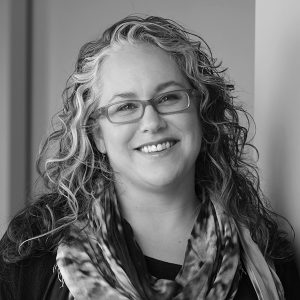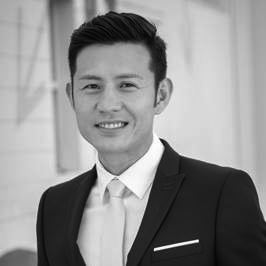
5 Strategies for When the Best Change Comes from Within
Sometimes change works best from the middle out, rather than the top down. Hyundai U.S. affiliates worked with frog to reimagine their rules of play to foster meaningful collaboration and innovation.
The truth is, there simply is no one-size fits all approach when it comes to facilitating change within an organization. Companies that embrace the crucial role of empowering internal leaders to design practical, long-term strategies for organizational activation often more quickly find solutions tuned to their culture than companies relying on external ‘best practice’ models.
Unlike adapting someone else’s model to fit, these middle-out strategies start with those deep within the company culture and build custom-fit solutions—as was the case for an informal team of eight leaders at Hyundai US affiliates, who partnered with frog to foster channels of collaboration and innovation across the US region.
Regional Silos Across Manufacturing Timeframes
Like many global manufacturing companies, Hyundai Motor Company maintains a distributed, lean organization with decision-making centralized in the parent company. This provides global scale and impact, and results in functional divisions in design, engineering, marketing and new ventures at the regional level, which all compete to shape strategies for their region.
While this competition traditionally surfaced the best ideas for the parent company, as the market has sped up in recent years, the duplication of effort and competing perspectives have limited the speed and scope of innovation for the US region, and resulted in few formal channels for communication across divisions at the regional level.
Finding Time to Innovate In a Lean Organization
At Hyundai, a small group of leaders in the US region recognized that in order to innovate faster, they needed to collaborate across businesses and time horizons to develop a shared perspective on the evolution of their region. These individuals, most at the second tier of regional leadership, saw the value greater visibility and collaboration across the region could bring to innovate faster for their rapidly evolving market.
However, they faced challenges typical with structural silos:
- “Not invented here” Ideas generated within one part of the organization lack clear alignment to the goals of other groups and are slow to be adopted.
- “I’m too busy right now” Teams and people who have the right ideas and the right position to influence their organizations must rely on informal networks to create change beyond their functional areas and to shape future priorities with collaborators from other areas.
- “It’s not on my roadmap” While market insights drive innovation throughout the company, the differing time-to-market horizons and organizational measures limited the ability to co-fund projects or align on a market perspective.
- “My collaborator moved…” Smart individuals within matrix organizations often identify peers and collaborators across the business with whom they can make great things happen. However, the value in these informal networks can be diluted when people move on or are promoted.
In 2016, these diverse leaders met informally and committed to finding new ways to communicate and collaborate for the good of their region.
Creating Momentum and Getting It Done
Without definition or budget beyond their initial cross-division handshake, these leads committed to making time to collaborate for 12-months to determine if their belief in new value could be proven.
In the first month, the group formed the Collaborative Innovation Board (“CI Board”) and co-created a 12-month plan for collaborative innovation, with the partnership of frog’s Org Activation team. The Board met regularly to develop a shared perspective on the trends most likely to impact the US region across the time horizons of the different functions. Using these trends, they prioritized and funded three collaborative pilot programs seeking implementable innovation beyond the scope of any single functional division. These projects went beyond simply the next vehicle that Hyundai has to offer but extended to envisioning Hyundai as a mobility enabler for young and old, those with physical limitations, or those that can’t afford to purchase a vehicle.
After one year, the Collaborative Innovation Board is still meeting and has proven its worth. One pilot program has already enabled the US region to take leadership in a global Hyundai initiative, and another, set to launch in 2019, will provide in-market proof of the value of cross-business collaboration. Because of this collaborative effort, new lines of communication have opened within the organization and the Board is expanding its scope for the coming year.
5 Strategies for Launching Middle-Up Innovation
The strategies and lessons learned by the Collaborative Innovation Board and frog can help others shape similar change in their own organizations.
Strategy 1: Co-Creation Makes Change ‘Invented Here.’
Co-developing ideas, roadmaps and plans enables all parts of the business to have ownership and see their priorities at play within the solutions. Meeting biweekly in facilitated sessions, the CI Board shared strategies, aligned budgets, and ran pilot programs to stress-test and prove the success of the collaboration. By working together, each strategy and pilot were meaningful across the region.
Strategy 2: Third-Parties Make Time For Focus.
To overcome the ‘I’m too busy right now’ challenge and to get an external perspective Hyundai’s CI Board partnered with frog as a neutral third-party to assess core needs and facilitate the co-creation of a 12-month plan for collaborative innovation. Having a third-party structuring and facilitating key meetings meant the leads could focus on implementing collaboration rather than creating process.
Strategy 3: Pilots Prove The Need To Be On The Roadmap.
Creating pilot programs that explore new innovations showcase how collaboration across the business can create tangible benefits. This success builds momentum for broader change and proves to management, future teams and global leadership that looking beyond the silo helps the region succeed. With 2 of 3 pilots in the first year showing tangible value, Hyundai’s CI Board has been able to make their work more visible.
Strategy 4: Co-Funding.
More often than not, the budget owner is the de facto leader of any initiative. By co-funding, you share ownership and encourage greater cross-functional engagement and alignment. The pressures of designing, engineering, marketing and selling cars—or any product—are immense and immediate. When attempting this kind of semi-formal change initiative, the tendency will always be for attention to drift back to immediate priorities.
In reflecting on their first year, the Hyundai CI Board decided that pilots in the second year must be funded by more than one group. This commitment of resources and integration into formal budgets is a strong signal that this new way of work is important.
Strategy 5: Recognize Persistent Champions And Formalize Relationships.
These initiatives often hinge on the persistence and political savvy of a few people, often informally linked. Building internal leaders with ownership in the success of the initiative is crucial, as is creating a structure that will survive the departure or promotion of these champions. For the CI Board, even with a third-party supporting on-going interaction, getting persistent participation would have been much more challenging without one or two individuals fighting to make this happen. During the first year, one of the most engaged leaders took another opportunity outside of Hyundai. Because of the semi-formal board structure, the group was able to maintain momentum.
No matter what the existing company culture, there is always possibility to create change in order to open up new innovative opportunities and foster long-term value and growth. For Hyundai, their lean culture provided internal leaders with high expectations but also significant latitude to make strategic bets and shape their future. The Collaborative Innovation Board was born because they had the right people in the right company to shape a middle-out strategy for innovation and future market success. While change takes a long time to become fully part of any organizational DNA, this group has already proven that they have the potential to change their market, impacting how Hyundai does business on the global stage.
The strategies employed by Hyundai’s internal team are examples of the kind of organizational activation strategies possible when using design to make change. Whether it’s top-down or middle-out, human-centered design has the power to activate any organization to make the most of their teams in order to change markets and evolve for tomorrow.

Turi McKinley focuses on developing frog’s design research, participatory design and creative collaboration skills. She partners closely with companies seeking to develop new skillsets and capabilities for user-centered design and innovation.

Daniel Han is an experienced product strategy manager with a demonstrated history of developing new products from concept inception, carrying through 5 year development cycle, and finally to launch. As Manager of New Business Innovation and Strategy at Hyundai Motor America, Daniel brings over 15 years of experience in Portfolio Management, Valuation, Strategic Planning, Business Strategy, and Product Marketing.
We respect your privacy
We use Cookies to improve your experience on our website. They help us to improve site performance, present you relevant advertising and enable you to share content in social media. You may accept all Cookies, or choose to manage them individually. You can change your settings at any time by clicking Cookie Settings available in the footer of every page. For more information related to the Cookies, please visit our Cookie Policy.
Our Studios


